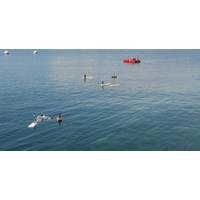
JANUS: First Digital Underwater Communication Standard
and systems of different manufacturers and nations. For that reason the JANUS developing process has been, since the beginning, as inclusive as possible, involving academia, industry and governmental agencies. Tests of JANUS at sea have been conducted in the last years by CMRE on board the NATO Research Vessel Alliance, and using the innovative CMRE Littoral Ocean Observatory Network (LOON), which facilitates experimentation of marine robots’ mission-base teams by creating a monitoring acoustic network with tripods of underwater communications equipment sitting on the seabed but accessible by
REP16: a Global At-sea Campaign
multi-domain cooperative robotics could improve current capabilities of Navies at sea. To this end, robots are being deployed from the Portuguese navy ships NRP Escorpião, NRP Pégaso, NRP Andrómeda, NRP D. Carlos I, submarine NRP Arpão, in addition to the NATO Research Vessel Alliance. CMRE scientists on board the NATO ship, in particular, are testing collaborative autonomous behaviours of underwater vehicles for ASW applications, while also testing the performance of network-based solutions for vehicle localization and navigation. For underwater acoustic
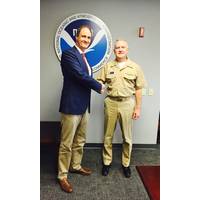
CMRE, NOAA Partner for Atlantic Ocean Monitoring
The two organizations signed a five-year framework agreement to conduct oceanic and atmospheric monitoring on board the NATO Research Vessel Alliance. There are strong societal needs for improved prediction of climate variability and its impact on the countries surrounding the tropical Atlantic basin. To address this challenge, in 1997 the United States Department of Commerce - National Oceanic and Atmospheric Administration (NOAA) initiated the PIRATA (Prediction and Research Moored Array in the Tropical Atlantic) multinational observation network, established to enhance knowledge and
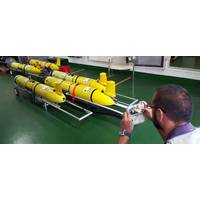
CMRE Listens to the Sea to Know it Better
The oceanographic campaign GLISTEN ‘15, starting off Elba Island, Italy at the end of August 2015, will test new sensors and solutions for ocean characterization using underwater gliders. Scientists from the NATO Centre for Maritime Research and Experimentation will operate on board the NATO Research Vessel Alliance along with researchers from nine collaborating institutions. From August 26 to September 9, 2015, the NATO research vessel Alliance will conduct the oceanographic campaign GLISTEN ‘15, in the Tyrrhenian Sea, north of Elba Island. The trial will be preceded by five days
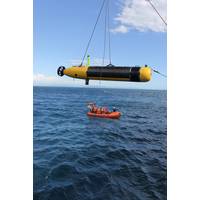
Unlocking Seabed Secrets with Underwater Robots
From September 22 to October 13, 2014, the NATO Research Vessel Alliance is conducting the Multinational AutoNomy Experiment (MANEX ‘14) along the Ligurian coast to demonstrate the advantages of mapping the seabed using autonomous vehicles. Throughout the experiment, multiple autonomous underwater vehicles (AUVs) equipped with modern sensors relevant to NATO minehunting missions are being employed in the Ligurian Sea along the Italian coast between Framura and Bonassola to collect data that will allow NATO researchers to advance the area of seabed mapping using autonomous vehicles, mainly for
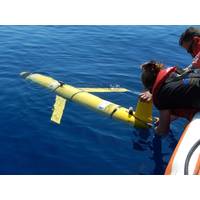
CMRE Leads Large Glider Experiment
on the future of ocean monitoring and seabed characterization. From June 6-26, 2014 the Sardinian Sea will be the site of the REP14-MED experiment, lead by the NATO Center for Maritime Research and Experimentation (CMRE), part of the NATO Science and Technology Organization. Onboard the NATO Research Vessel Alliance, operated by CMRE, and onboard Research Vessel Planet, operated by the German Research Center WTD71, as well as remotely at research centers ashore, scientists and engineers from 21 partners and six Nations, will test and develop new systems, technologies and solutions for ocean monitoring
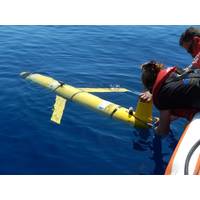
CMRE Leads Large Glider Experiment
on the future of ocean monitoring and seabed characterization. From 6 to 26 June 2014 the Sardinian Sea will be the site of the REP14-MED experiment, lead by the NATO Centre for Maritime Research and Experimentation (CMRE), part of the NATO Science and Technology Organization. Onboard the NATO Research Vessel Alliance, operated by CMRE, and onboard Research Vessel Planet, operated by the German Research Centre WTD71, as well as remotely at research centres ashore, scientists and engineers from 21 partners and six Nations, will test and develop new systems, technologies and solutions for ocean monitoring
NATO Center Tests Wave Glider in ASW Exercise
includes two components: Multistatic ASW Experimentation using collaborative AUVs and ASVs, and tactical planning and exercise reconstruction using CMRE’s Multistatic Tactical Planning Aid (MSTPA) tool. POMA ‘13 CMRE experiments are conducted from and supported by the 93-meter NATO Research Vessel Alliance. www.cmre.nato.int


 February 2025
February 2025





